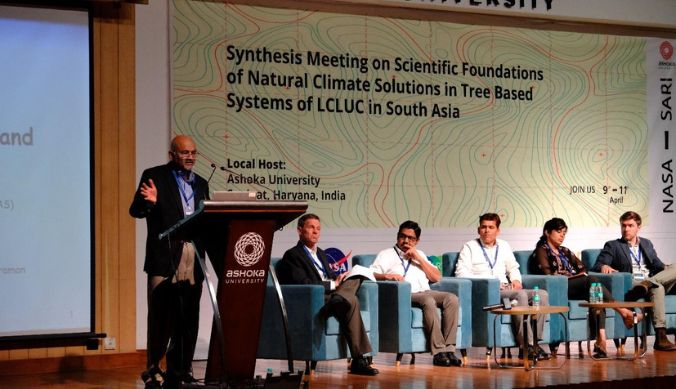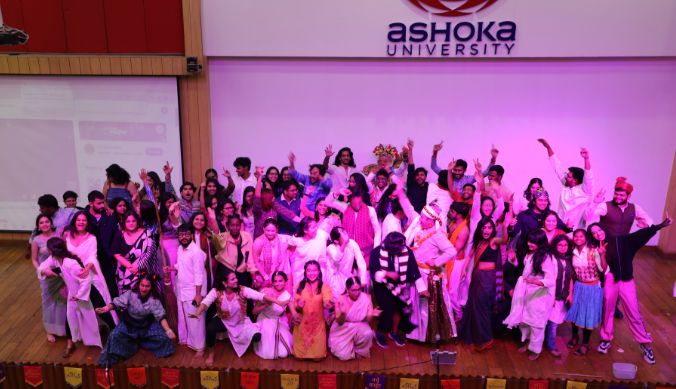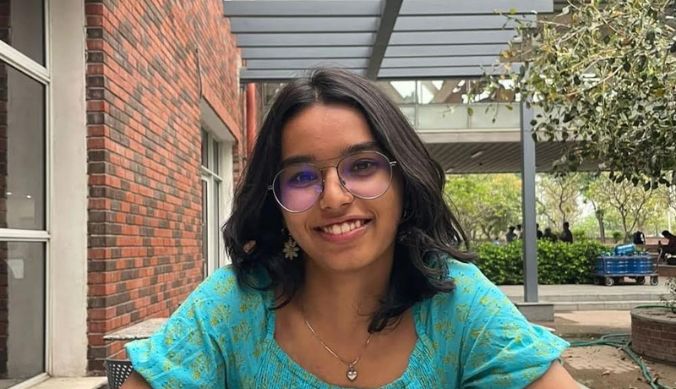#AshokaBookTower – ‘Waiting for Swaraj’ – Written by Aparna Vaidik, the book takes a closer look at the inner lives of intrepid revolutionaries
Published by the Cambridge University Press, the book narrates what it meant to be a revolutionary in the British India of the 1920s, while taking a closer look at the inner lives and how it influenced their actions.

Office of PR & Communications
2 July, 2021 | 5m readSynopsis: Set in British India of the 1920s, Waiting for Swaraj follows the cadence and tempo of the lives of the intrepid revolutionaries of the Hindustan Republican Association and the Hindustan Republican Socialist Association who challenged the British Raj. It seeks to comprehend the revolutionaries’ self-conception – what did it mean to be a revolutionary? How did a revolutionary live out the vision of revolution, what was their everyday like, did life in revolution transform an individual, what was their truth and how was it different from that of the others? The book locates the essence of being a revolutionary not just in the spectacular moments when the revolutionaries threw a bomb or carried out a political assassination, but in the everyday conversations, banter, anecdotes, and in the stray fragments of the life in underground. It demonstrates how ‘waiting’ was the crucible that forged a revolutionary.
In conversation with the author, Aparna Vaidik, Associate Professor of History, Ashoka University.
What was the inspiration behind Waiting for Swaraj: Inner Lives of Indian Revolutionaries?
The book’s idea came out of Roland Barthes’ A Lover’s Discourse: Fragments where he talks about the act of waiting, as something a lover does. A lover’s wait is full of anticipation, agony, anxiety and agitation. The action is in the moments of waiting. So, it is only when a person waits that they acquire the identity of a lover. It’s while reading Barthes that the idea of waiting being a constitutive and creative dimension of a revolutionary’s life clicked for me.
Could you talk about what went down in writing the book?
My journey with this book did not start with a desire to find and write about the revolutionaries’ everyday life. I continued to focus on their political writings for a while until I realized that their inner lives were also important for understanding their revolutionary politics. It is in their memoirs and reminiscences that one finds the details of the lives they lived away from public gaze. My late realization was the result of my own gendered perception of how one writes about male revolutionaries who are believed to be men driven by ideologies and strong beliefs. Consequently, one tends to focus on the more spectacular events because men’s inner lives are not seen, erroneously, as contributing to their being. It is generally when we study women that we turn to examining inner lives. This book is an attempt to reverse that trend and to see what the male revolutionaries’ inner life was like. The book demonstrates that the revolutionaries’ everyday praxis was the site for their ‘ideology’.
A part of the book’s description states: The book locates the essence of being a revolutionary not just in the spectacular moments, but in the everyday conversations, banter, anecdotes, and in the stray fragments of the life in underground. This makes for a very strong read. Could you talk more about this?
This book is about a set of revolutionaries who did not make a revolution. Many of them did not even shoot a gun or throw a bomb. So, the question is what made them imagine themself as a revolutionary? The answer that Waiting for Swaraj offers is: it is the revolutionaries’ life in underground that constitutes their self-perception. This book takes a cue from E.P. Thompson’s Making of the English Working Class to understand the making of these revolutionaries. Thompson writes about ‘listening’ as an important element in history-writing. That is, to write the history of the working class one had to listen to the voices, dreams, passions, family conversations, underground meetings, escapades, banter and their ballads and stories. My book is also an attempt to ‘listen’ to the revolutionaries, to eavesdrop on their conversations as they bantered about how they were going to die, the food that they hankered for, the loves they had lost, their disagreements and conflicts and their deep friendships. It is in these everyday conversations that one can see these young men imagining themselves as revolutionaries.
In Between Kranti and Inquilab chapter you wrote: The Amar Chitra Katha life-narrative of Azad provides us with an interesting entry point into understanding the postcolonial ‘scripting’ of the revolutionaries. I found the whole Amar Chitra Katha and Inquilab Zindabad’s reference very interesting. Would you mind talking about the postcolonial scripting and Inquilab Zindabad’s popular culture usage?
The histories of radical and armed colonial resistance were primarily scripted in the late 1960s and 1970s when they became part of the celebratory story of Indian nationalism. Near hagiographical portraits of the revolutionaries seamlessly made their way into school textbooks, comics, and cinematic adaptations alongside those of Gandhi, Nehru, and a bevy of other nationalist leaders which facilitated their co-option in the postcolonial state-building project. Waiting for Swaraj questions the co-optation of the revolutionaries within a larger story of socialism and the postcolonial celebration of individual revolutionaries in order to contain and demonize the militant protest movements (such as Naxalism and workers’ strikes) emerging in India at the time.
Any anecdote while writing the book that you wish to share.
This book has been long in the making. I changed jobs, moved from one continent to another and became a parent in the time I wrote this book. One day I received a prayer note from one of my sons who wanted me to come over and play with him as he was tired of seeing me labour over my writing desk. The note said: ‘Ganga maiyya, amma ki book jaldi likhwa do (Mother Ganges please help mumma finish her book quickly). So he is now mighty happy to see the book! Would you like to talk about your current and future projects a bit?
I have another book on the revolutionaries coming out next year, Revolutionaries on Trial: Sedition, Betrayal and Martyrdom (Aleph). It is on Bhagat Singh’s trial. The book is based on research done in Lahore, Delhi, Chandigarh and London. It has some heretofore unseen archival materials. To know more about Aparna Vaidik, click here. You can order the book here. ______________________________________________________________________________
About #AshokaBookTower The #AshokaBookTower campaign showcases books written by our faculty and staff members. The campaign aims to highlight the rich variety of subjects and intensive scholarship these books represent. An in-depth conversation with the author will also give a glimpse into what went into the writing of the book. This will be a recurring affair and will highlight some of the newest launches as well as the old collection. Do follow us on social media (Facebook | LinkedIn | Twitter | Instagram) to know more about the campaign!













